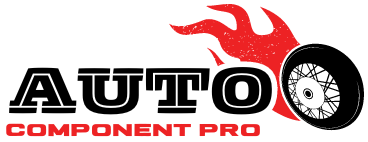Fires can happen anywhere and at any time. Having the right fire protection systems in place is crucial for minimizing damage and saving lives when a fire breaks out. One of the most common and useful tools for controlling small to medium-sized fires is the portable fire extinguisher.
In this comprehensive guide, we will explore what fire extinguishers are, how they work, the different types available, proper usage tips, and why they are an essential part of any fire safety plan.
What is a Fire Extinguisher?
A fire extinguisher is a portable device filled with a specialized extinguishing agent that can be used to put out a small fire or suppress a fire until the fire department arrives. Fire extinguishers work by expelling the extinguishing agent onto the fire through either a hand-held wand or nozzle. The agents interrupt the chemical reaction of combustion, depriving the fire of oxygen, heat, or fuel. This allows a person to quickly extinguish a contained fire before it has time to grow into something much more dangerous.
Fire extinguishers are typically bright red cylinders ranging from 5 to 20 pounds. They are marked with a rating designating the type of fire they are intended to fight. Extinguishers are found in commercial and residential settings, vehicles, airplanes, and anywhere a potential fire hazard exists. They are an essential part of any emergency preparedness plan.
How Do Fire Extinguishers Work?
Fire extinguishers extinguish fire using various agents that are expelled from the cylinder at high pressure when the extinguisher lever is squeezed. This propels the agents onto the fire through a nozzle or short ranged hose. The agents themselves interrupt the chemical reaction of the fire by removing heat, oxygen, or fuel. Without these three elements, called the fire triangle, the fire quickly goes out.
The most common extinguishing agents are:
- Water – cools burning material and soaks surrounding items to prevent reignition. Used for Class A fires.
- Foam – works like water but sticks to surfaces longer. Used for Class A and B fires.
- Dry chemical – interrupts fire by separating flame from fuel. Used for Class B and C fires.
- Wet chemical – similar to foam but more corrosive. Used for Class K fires.
- Carbon dioxide (CO2) – displaces oxygen. Used for Class B and C fires.
- Halon – interrupts chemical reaction. Used in aviation but being phased out due to environmental concerns.
- Clean agents – do not damage electronics. Used for Class C fires.
The extinguishing agent is pressurized with nitrogen, air, or carbon dioxide inside the cylinder. When the lever is squeezed, a valve is opened releasing the pressurized agent through the nozzle onto the fire.
Types of Fire Extinguishers
There are many different types of fire extinguishers designed to fight different classes of fire. The class letter designation helps users identify which extinguisher is appropriate for the type of fire at hand.
- Class A extinguishers are for ordinary combustibles like wood, paper, cloth, trash, and plastics. Foam and water extinguishers are ideal for Class A fires.
- Class B fires involve flammable liquids like grease, gasoline, oil, and oil-based paints. These require a carbon dioxide, dry chemical, or foam extinguisher. Using water on a Class B fire can cause the burning liquid to splatter, spreading the flames.
- Class C fires involve energized electrical equipment. Foam and carbon dioxide extinguishers are designed to smother Class C fires without electrocuting the operator.
- Class D fires are combustible metals like magnesium, titanium, and sodium. These require special dry powder extinguishers designed specifically for fighting combustible metals.
- Class K fires involve cooking oils and greases such as animal fats and vegetable fats. Wet chemical extinguishers provide a special solution that prevents flare-ups of burning oils.
Newer fire extinguishers may be rated for multiple classes of fire, such as A-B-C or B-C. Check the label before purchasing an extinguisher to make sure it is suitable for the types of fire hazards you need to protect against.
Using a Fire Extinguisher
Using a fire extinguisher properly requires following some basic guidelines. Always read the instructions and only fight fires when they are small and contained. Evacuate occupants first and call the fire department even for small fires.
Here is a simple acronym to remember the operating steps:
- PULL the pin breaking the extinguisher seal. Stand back 6-8 feet from the fire.
- AIM at the base of the fire, not at smoke or flames.
- SQUEEZE the lever slowly and evenly. Deliver agent in short bursts.
- SWEEP from side to side. Keep the extinguisher aimed at the base of the fire until it is fully out. Watch for reignition.
Most portable extinguishers will only discharge continuously for 8 to 60 seconds. Be prepared to evacuate if the fire does not quickly go out. As you back away keep an eye out for reignition.
Proper Usage Tips
- Regularly inspect extinguishers for broken seals or damage. Weigh them to check pressure.
- Install wall hooks and brackets to ensure extinguishers are visible and easily accessible.
- Know the locations of extinguishers in your home and workplace. Remove obstructions around them.
- Only fight small, contained fires. If the fire grows or you run out of agent, evacuate immediately.
- Position yourself 6-8 feet away and upwind if possible. Move closer as the fire is extinguished.
- Squeeze the handle lever slowly and evenly. Use short bursts aimed at the base of flames.
- Always maintain an accessible exit path to your rear. Have someone back you up if possible.
- Recharge extinguishers immediately after any use according to manufacturer’s instructions.
- Replace extinguishers if damaged, if age exceeds the service life, or if discharge nozzle clogs.
Why Fire Extinguishers Are Essential
Fire extinguishers are a critical component of any emergency action plan. They allow occupants to fight small emergent fires before they grow out of control. Key reasons fire extinguishers are essential:
- Allow occupants to escape by clearing exit paths of smoke or small fires.
- Suppress fire until professional responders arrive. Prevents larger structural fires.
- Extinguish fires before sprinklers or alarms are activated, limiting water damage.
- Prevent small fires from spreading to larger hazardous areas like gas lines or chemical storage.
- Can minimize damage and financial losses from contained fires.
- Used properly, allow safe extinguishing of fires without harm to the operator.
- Required by fire codes and OSHA for inclusion in public spaces and workplace safety plans.
Regular hands-on use training ensures occupants know how to properly operate extinguishers in an emergency. Though no substitute for evacuating in a major fire, having fire extinguishers on hand and understanding how to use them is crucial for protecting life and property.
Final Words
Fire extinguishers are the first line of defense when a small fire breaks out. They are portable, allowing quick suppression of emerging fires. Different extinguisher types match various classes of fire. Knowing how to properly select and operate a fire extinguisher is an important skill for households, businesses, and public institutions.
Fire extinguishers buy time to sound the alarm, exit the building, and wait for professional responders. Through proper placement, maintenance, and training, these simple devices save countless lives and property each year.


